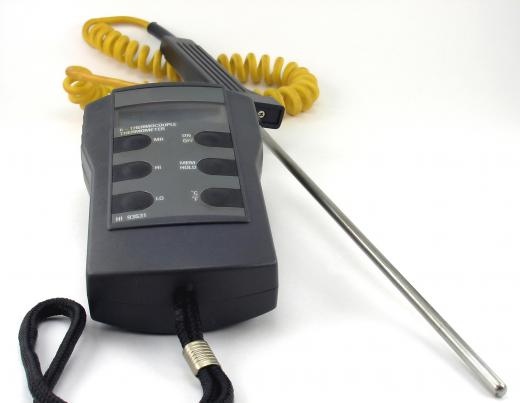A thermal converter, also known as a thermocouple converter or a thermoelectric generator, is an electronic device that is capable of converting heat energy into electrical energy. Although there are several thermal converter types, they are all based upon the Seebeck effect. The Seebeck effect is a phenomenon in which differences in temperature can be harnessed to generate an electrical current. It was first discovered by Thomas Johann Seebeck in 1826, when he observed that two dissimilar metals can generate an electrical charge as long as the connecting points of the two metals are at different temperatures. It has since been found that the thermoelectric effect generated by these circumstances increases as the difference in temperature does.
One common misconception is that a thermal converter is the same thing as a heat engine. A heat engine converts differences in temperature into mechanical output, while a thermal converter turns temperature differences directly into electrical energy. Also, while heat engines often are more efficient than thermal converters, thermal converters may be preferable in some situations as they are smaller and more compact than most heat engines. The key difference between thermal converters and heat engines is that, unlike most generators, a thermal converter generally has no moving parts, with the exception of a possible cooling fan.

Thermal converters can be applied to a number of different situations. Apart from being used to replace heat engines, research is also being done to harness the use of waste heat from combustion engines, such as those used in cars and airplanes. If this can be done, the fuel efficiency of these machines could be increased by a fairly large amount. Thermal converters are also used in far-ranging space probes to generate a constant source of electrical power.
There are some issues with thermal converter use, however. For example, is the converters usually only produce a 5-10% efficiency unless the voltage is increased significantly. In order to create a large enough output for the thermal converter to compete with the efficiency of a combustion engine, the number of dissimilar elements used to generate the electric current have to be increased. The end result is that the thermal converter ends up becoming too large to be efficient. Research is being done, however, to increase the generative capacity of thermal converters, so in time these temperature differences may be harnessed more efficiently without making them so large that they lose their effectiveness.
